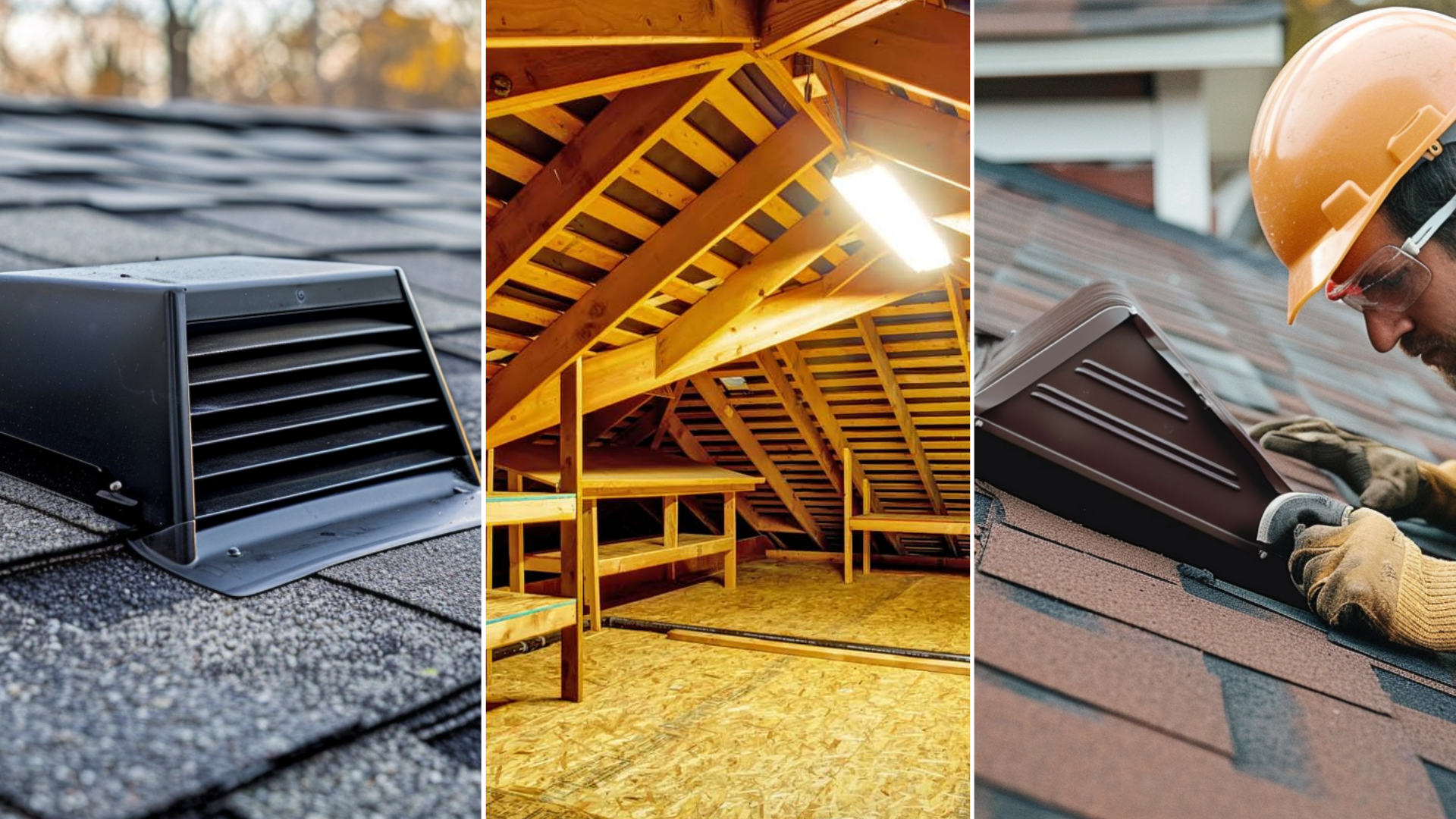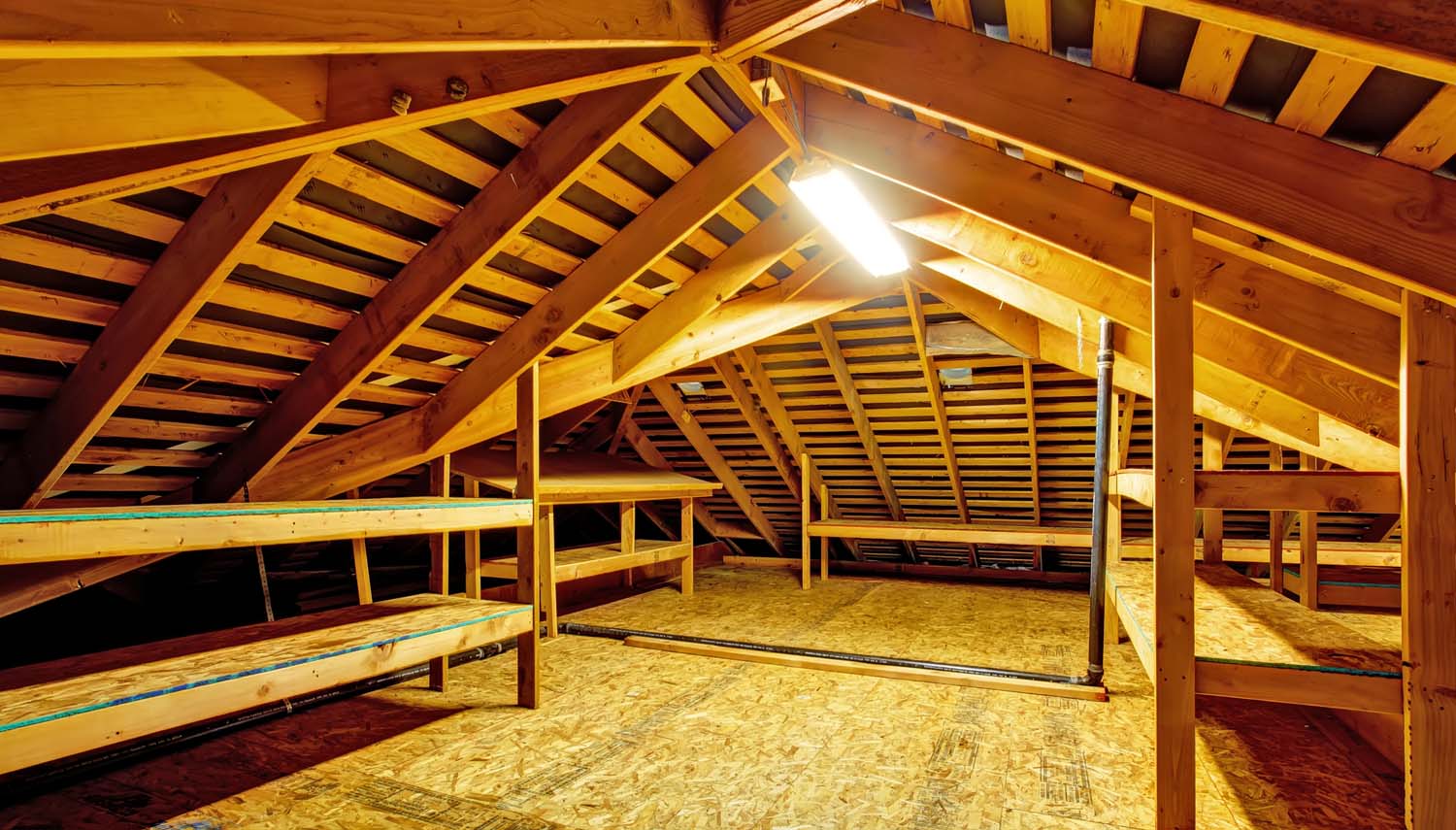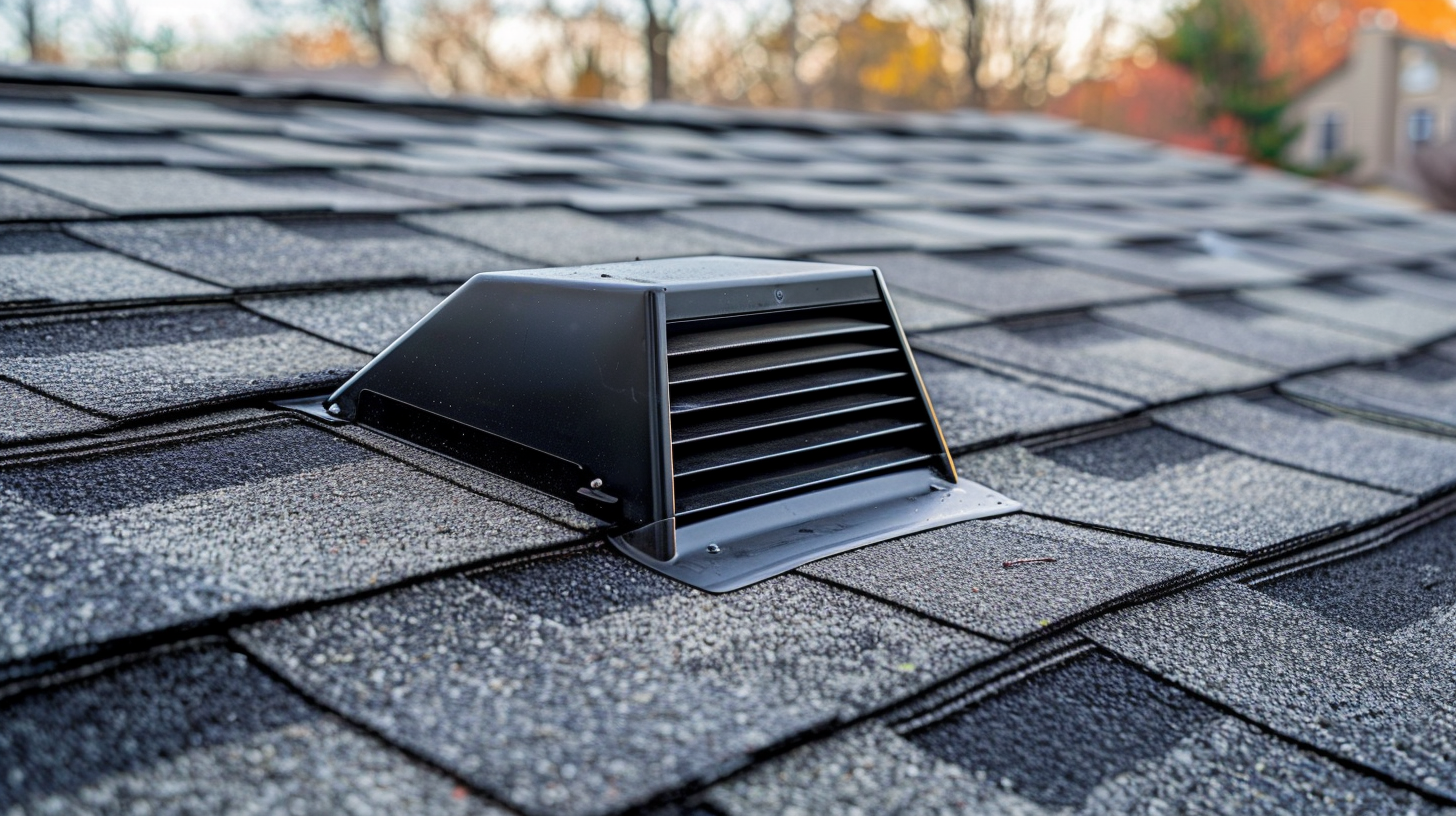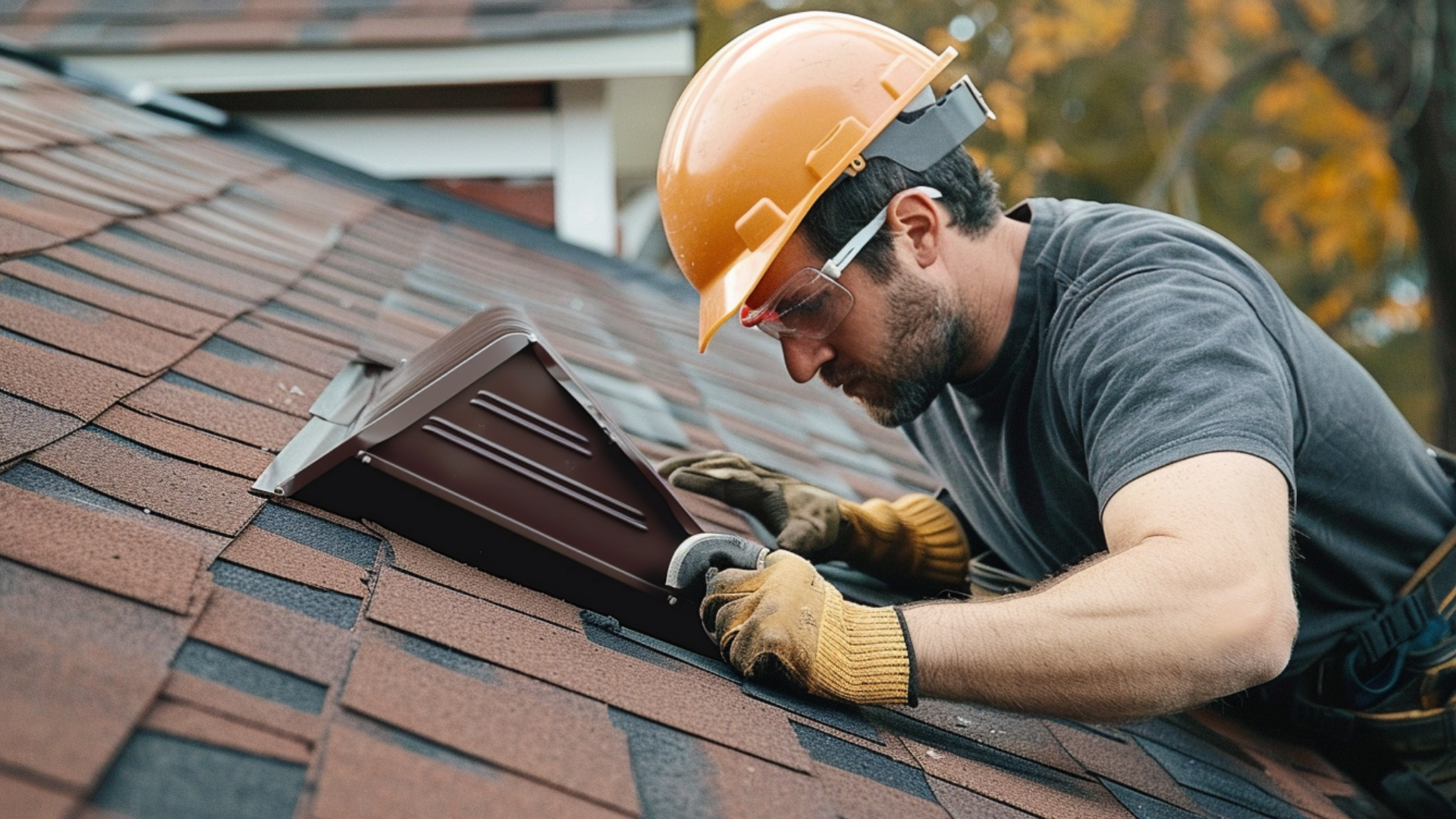Attic Venting
San Antonio

Attic Venting San Antonio
Sky Roofing Construction & Remodeling will give insights into the advantages and benefits of attic venting, emphasizing its significance and the positive influence it can have on the quality of life within the home and the longevity of its roofing system. Whether you are a homeowner looking to improve energy efficiency or a construction professional interested in roofing best practices, understanding the significance of attic venting is essential for ensuring a well-ventilated living space.
Importance of Attic Venting
Attic venting, including power vents, gable vents, static vents, shingled intake vents, and rafter vents, is essential in maintaining adequate airflow and enhancing the overall efficiency of a roofing system, including asphalt shingles and roof shingles. Proper attic ventilation, which may involve insulation baffles and balanced ventilation, prevents the accumulation of stagnant air and moisture, addressing moisture issues and excess moisture that can lead to various problems such as mold growth, roof deterioration, and higher heating costs. This ventilation system saves thousands of dollars and promotes adequate ventilation for a healthier indoor environment.
One of the critical benefits of adequate ventilation, such as ridge and passive ventilation, is the prevention of pressure buildup and balanced ventilation, promoting a well-ventilated attic and attic ceiling. During hot weather, attics can become extremely warm, causing air and attic temperatures to rise and potentially strain the roof structure and insulated ceiling, impacting ceiling surfaces and attic floor level. By allowing continuous airflow and natural flow, attic vents help equalize the pressure inside and outside the attic, thereby preventing potential damage to rafter spaces and the attic floor space, including ridge lines and roof deck.
Furthermore, correct attic ventilation, including insulation baffles, balanced ventilation, and ridge ventilation, reduces the risk of hot attic air entering the living space, maintaining a fabulous house and preventing the need for excessive cooling in the winter months, promoting house calm and preventing issues with gable walls and eaves in winter. Inadequate ventilation, leading to poor ventilation and excess moisture, can cause the hot air trapped in the attic to seep into the rooms below, making them uncomfortable and increasing the need for cooling systems. By expelling hot air through roof vents and balanced ventilation, attic venting ensures that the living space remains more relaxed, reducing the reliance on air conditioning and improving maximum energy efficiency, benefiting the entire roof and promoting a well-ventilated attic.
Different Types of Attic Venting
Insufficient attic venting, including eave vents and types of attic venting like turbine vents and standard exhaust vents, can lead to heat and moisture buildup, deteriorating roofing materials and roof louvers, impacting curb appeal, and causing ice damming. This can lead to premature roof aging, warping, and even potential leaks. Several attic venting systems, each with its unique purpose and installation process, ensure entire ventilation and ideal venting, promoting a well-ventilated attic and excellent housing conditions.
Ridge Vents: These vents facilitate the release of hot air from the attic through the highest point of the roof, encouraging airflow and intake ventilation. They are usually hidden to preserve the roofline’s appearance and safeguard against moisture damage. They promote a cooler attic and maintain air temperatures. For optimal airflow and foot ventilation, ridge vents should be paired with sufficient intake vents, such as roof edge vents, to prevent ice damming and ensure continuous airflow.
Box or Dome Vents: These common types are commonly installed on the uppermost section of the roof and come in various shapes and sizes, meeting building code requirements. They are typically made of metal or plastic and allow hot air to escape from the attic, preventing eaves in winter issues and maintaining a cooler attic. Installation involves cutting a hole in the roof, which is then covered by the vent to provide exhaust ventilation and avoid moisture damage, improve airflow, and prevent ice damming.
Gable Vents: These vents help to extract hot air from the attic space, promoting exhaust fan use and maintaining a cooler attic. They are easier to install since they do not require cutting into the roof and meet building code requirements. However, they are less effective than ridge or box vents because they only provide limited airflow, impacting air flows and attic vent fan efficiency and affecting indoor air quality and temperatures.
Soffit Vents: These vents, including intake ventilation, are installed beneath the eaves, maintaining a cooler attic. They allow cool outside air to enter the attic and prevent common exhaust vent blockages, promoting a well-ventilated attic and improving the airflow. They work hand in hand with higher exhaust vents, such as attic vent fans, to create a continuous flow of fresh air and prevent moisture damage, promoting ideal venting and ensuring a cooler attic. Soffit vents are typically rectangular or round and require proper insulation to prevent blockages and maintain ideal venting, preventing ice damming and maintaining a cooler attic.
Excessive heat trapped in the attic can transfer to the living spaces below, affecting indoor air quality and making the home uncomfortable. This leads to higher energy bills and square inches, impacting curb appeal and house condition.
Proper Attic Venting Installation
Proper attic venting installation, including soffit vents and fascia vents, plays a crucial role in maintaining the health and longevity of your home. Allowing air to circulate freely through the attic space helps regulate temperature, reduce moisture buildup, and prevent damage to the roof structure, avoiding moisture damage and meeting building code requirements.
Calculating the total vent area is crucial for ensuring proper ventilation, which includes continuous ridge vents and individual vents. This calculation considers the attic’s size and the climate region where the home is situated. As a general guideline, the total vent area should be at least 1 square foot for every 150 square feet of attic space. This approach ensures cross ventilation and perforated venting, promoting adequate airflow throughout the attic space.
The ventilation process typically involves installing both intake and exhaust vents, such as passive vents and gable end vents. Soffit vents are often used as intake vents at the roof’s eaves to allow fresh air to enter at the eave level. Exhaust vents, like wind turbines or eyebrow vents, are placed at the roof’s highest point to allow hot air to escape through hip roofs.
Installation steps include:
• Accurately measuring and positioning the vents.
• Cutting holes in the roof or soffit for standard exhaust vents.
• Securely attach the vents for balanced ventilation.
It is essential to consult with professionals to ensure a proper installation and types of vents, as improper venting can lead to potential problems with attic insulation and roof aging.
Proper attic ventilation is essential, as it ensures a healthy and efficient home that meets building code requirements. Consult with a roofing professional to determine the best attic venting system for your specific needs and ensure proper installation, preventing eaves in winter issues and promoting airflow.
Transform Your Home’s Comfort with Attic Venting
Achieving proper attic venting is key to maintaining a healthy and durable home while also maximizing energy efficiency. Sky Roofing Construction & Remodeling is here to guide you through the complexities of attic ventilation, offering insights into its significance and benefits. Whether you’re aiming to enhance your home’s curb appeal, reduce heating costs, or ensure proper airflow, our team can assist you in a quality roofing installation. Contact us today at (210) 942-9797 to take the first step toward a well-ventilated and resilient roofing system.
Learn more about attic venting and the roofing services we offer: https://skyroofingconstructiontx.com/roofing-services/
Quality workmanship done right the first time
Contact Us
Address
415 Balcones Heights Rd.
San Antonio, TX 78201
Contact@SkyRoofingConstructiontx.com
Call Us
(210) 942-9797




